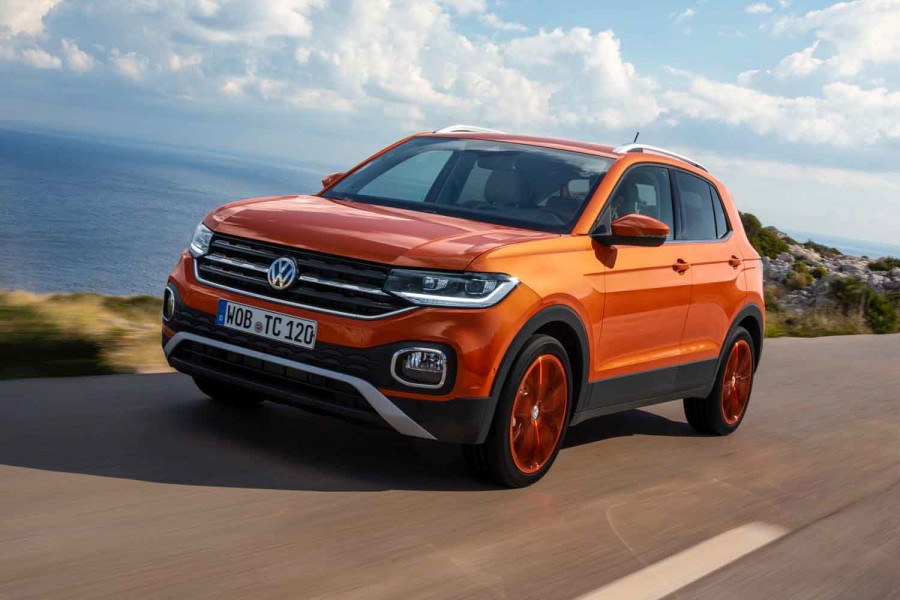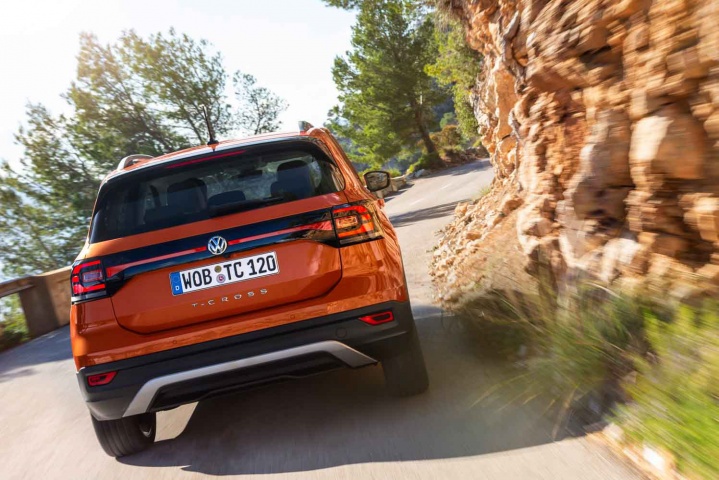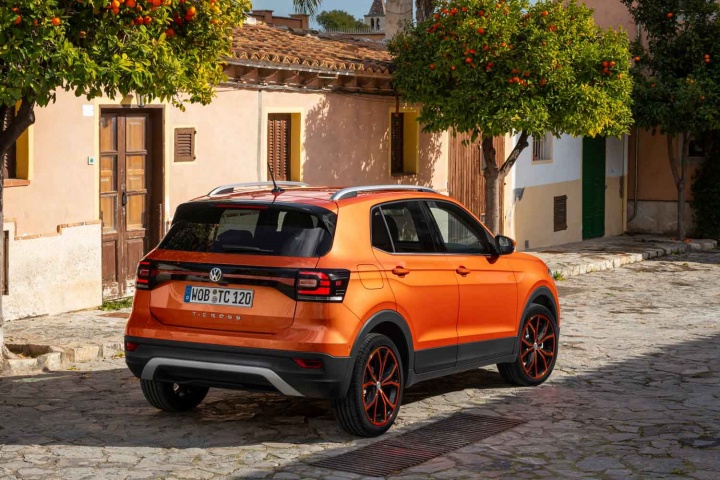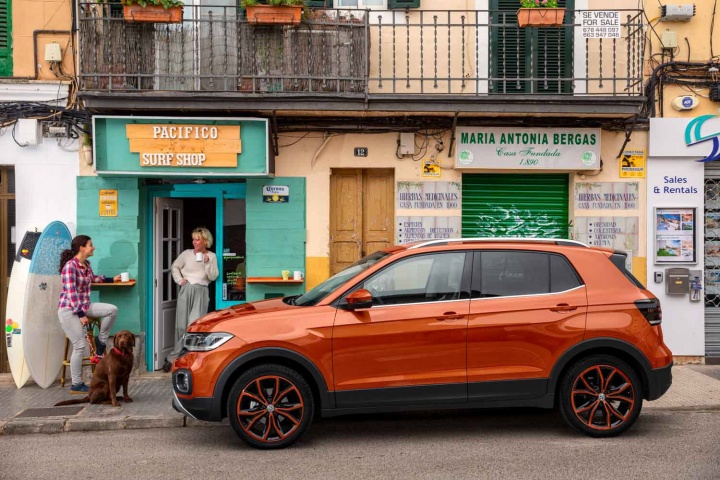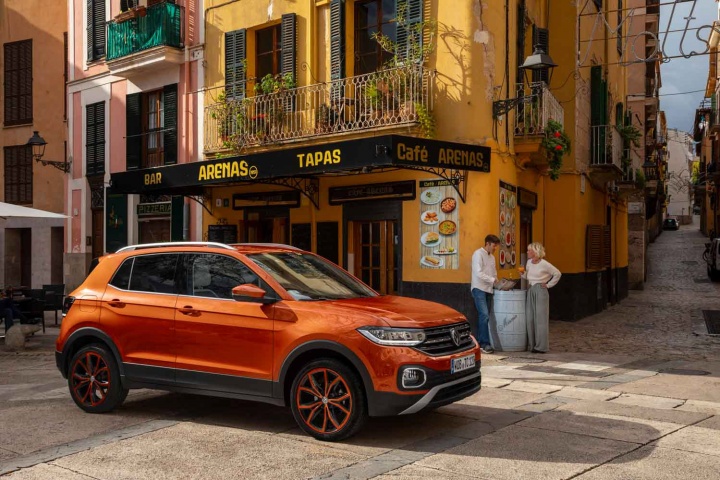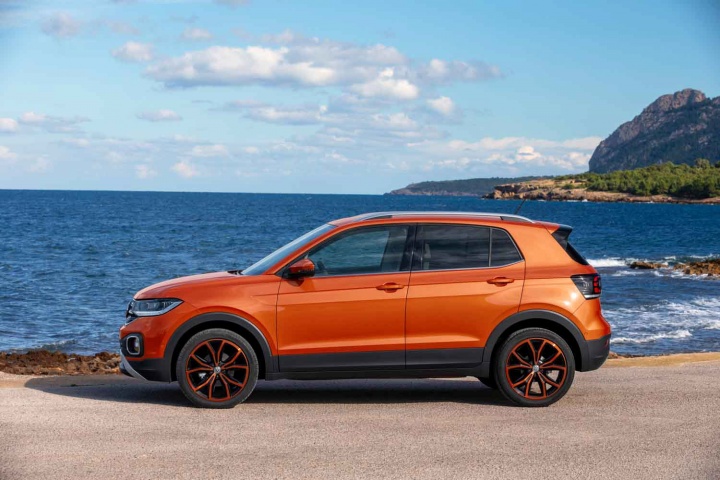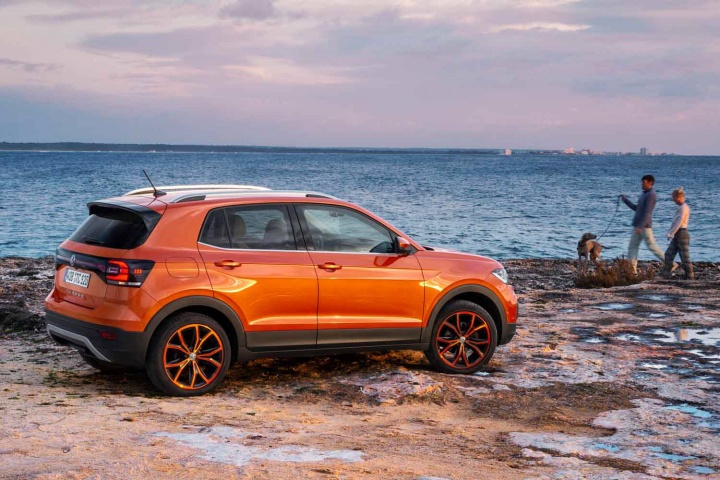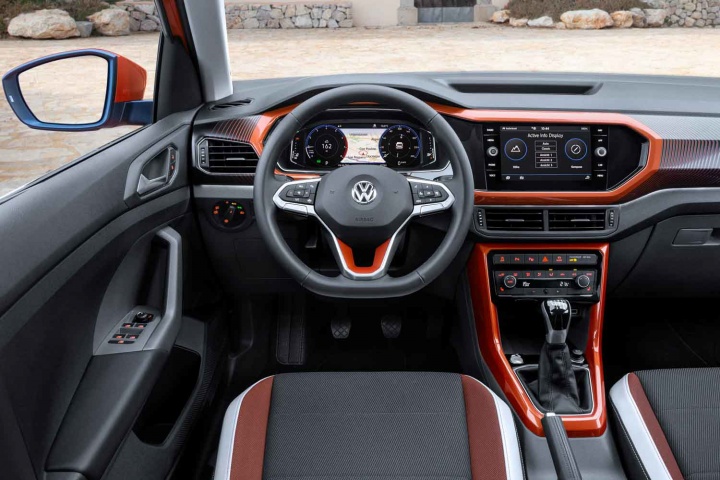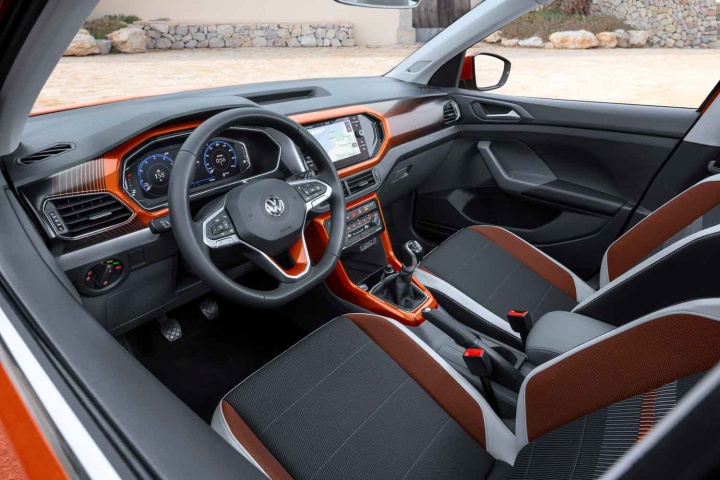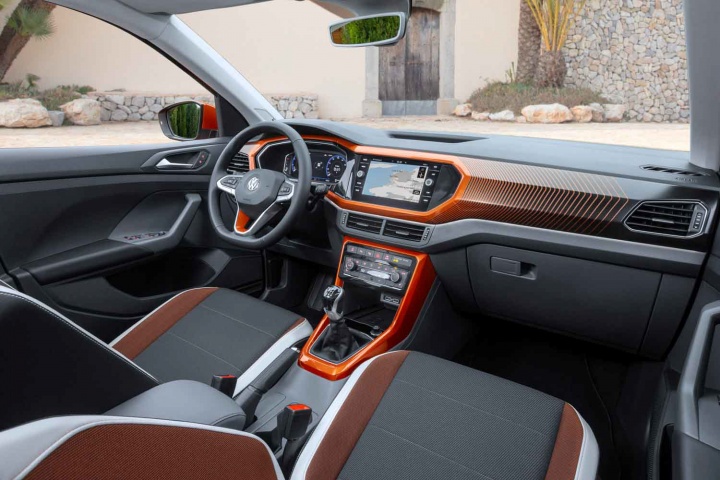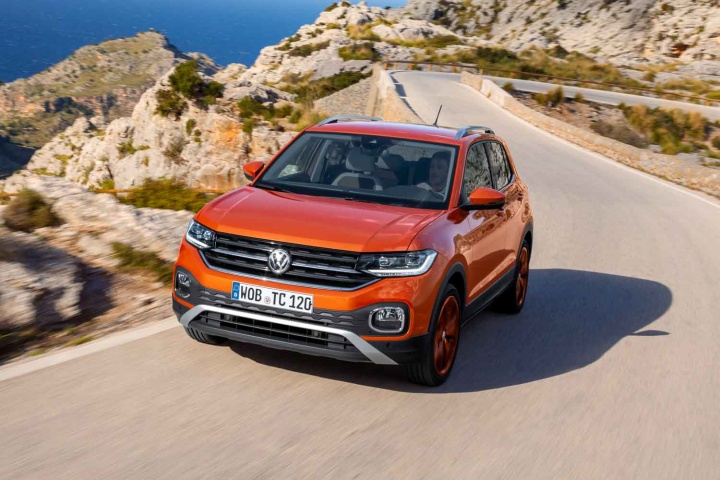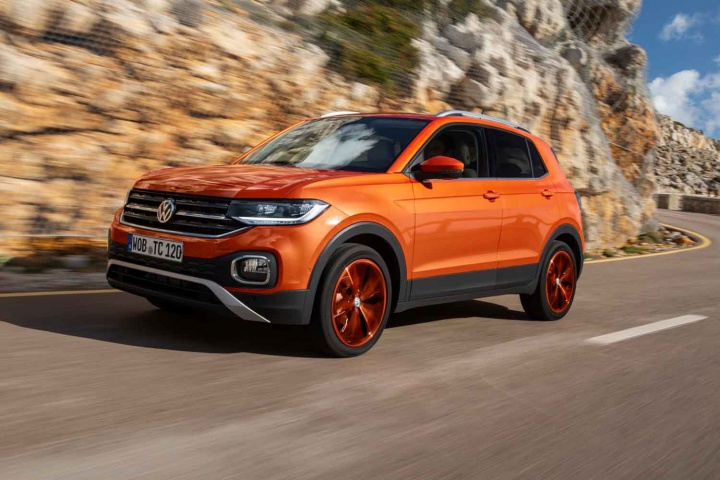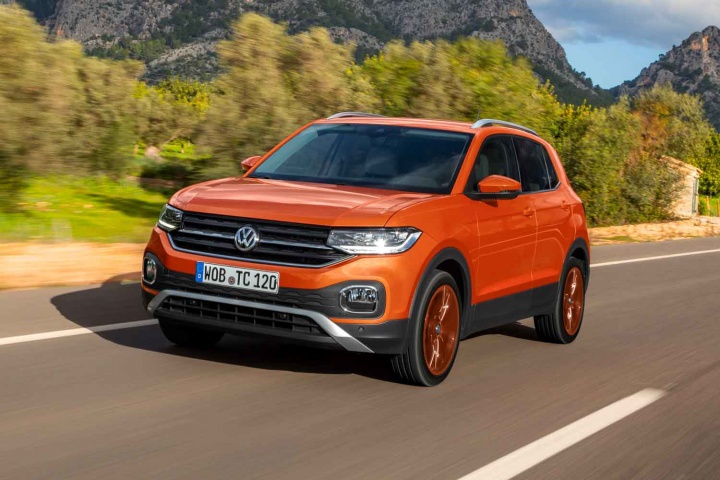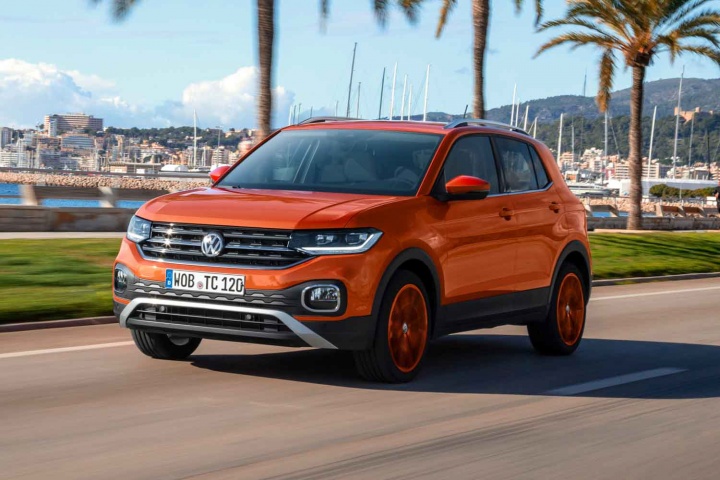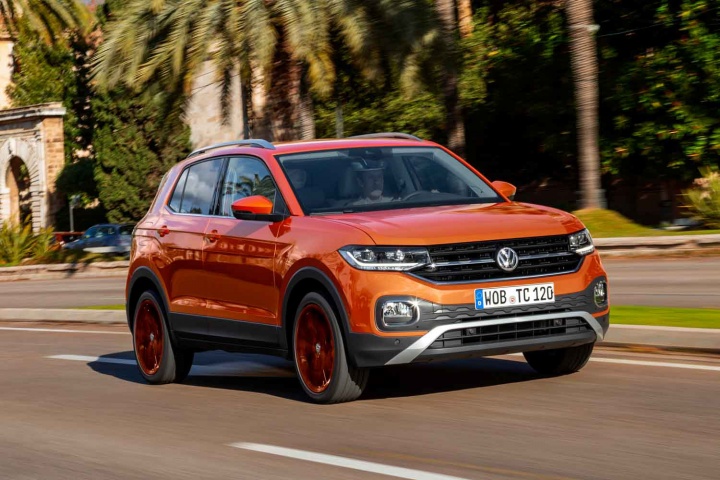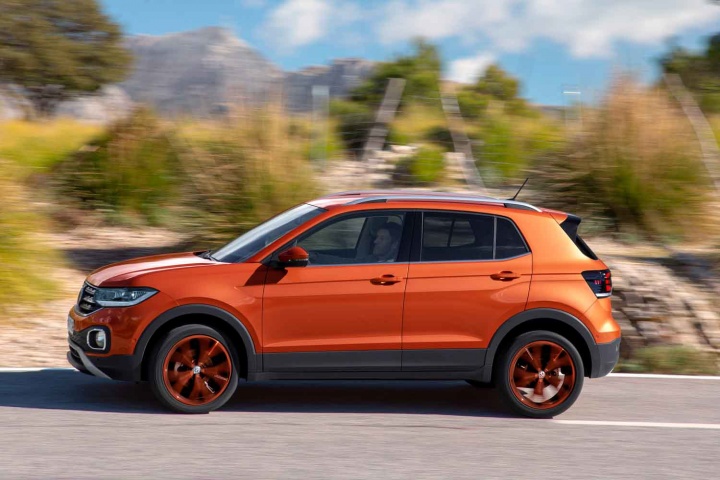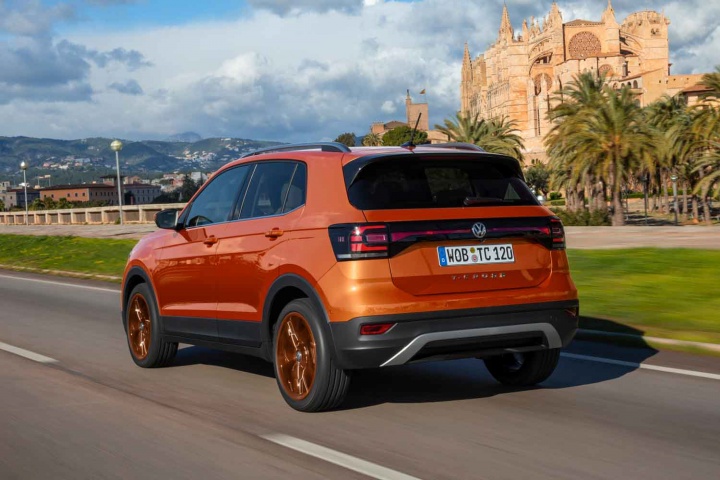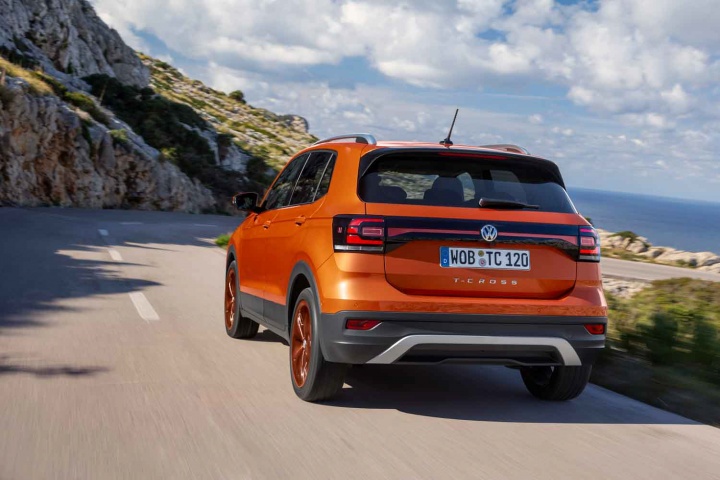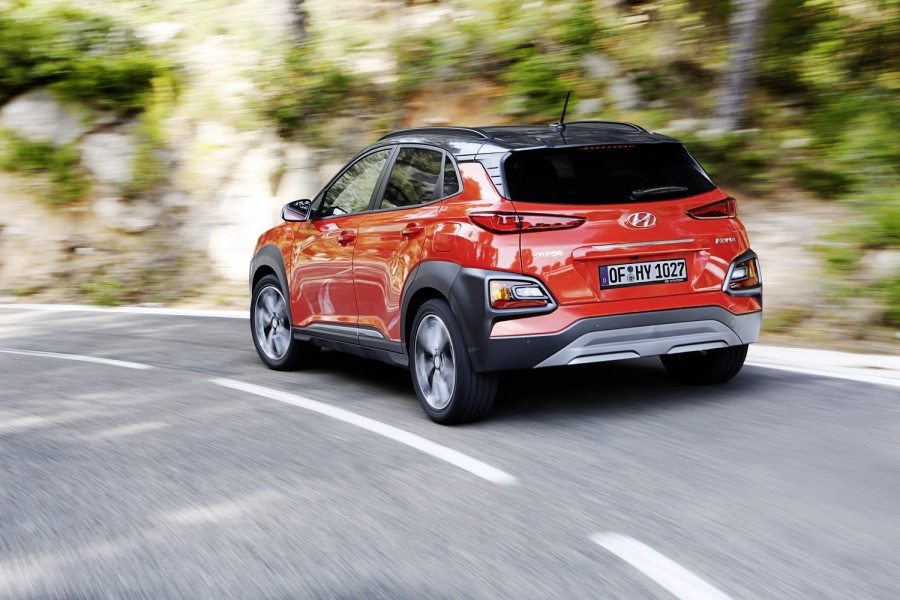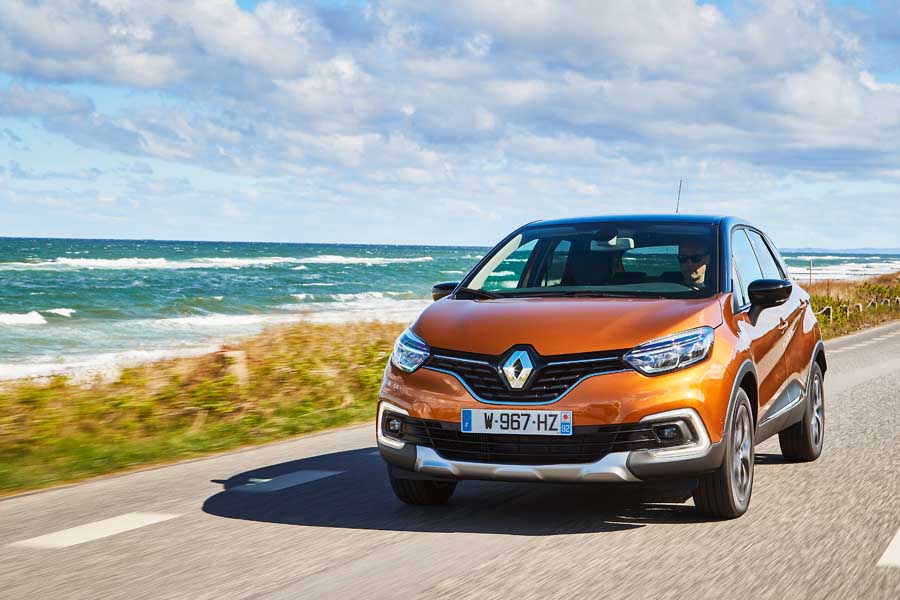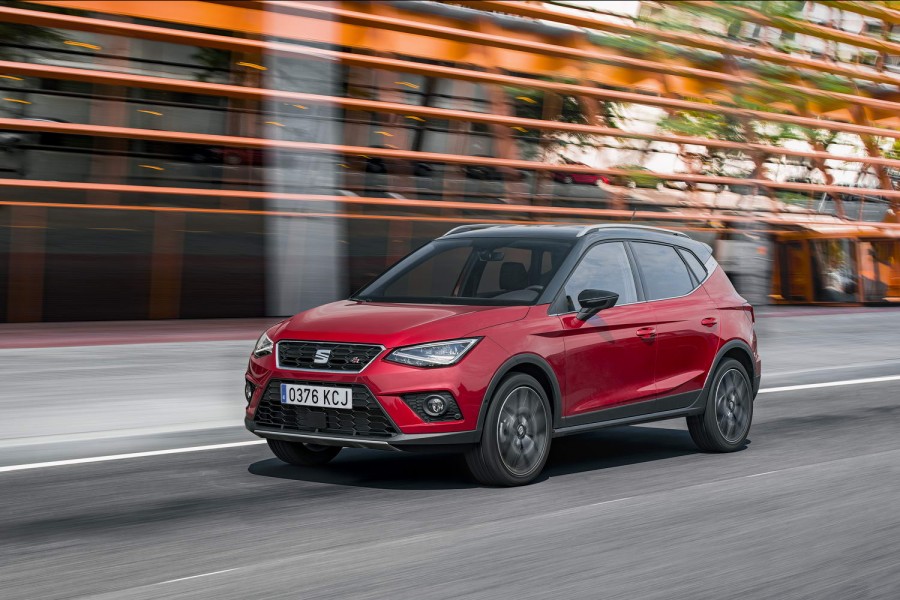The Volkswagen T-Cross rounds off what is now a comprehensive VW SUV line-up. It will fight in what is a massively competitive segment, so Volkswagen has put its best foot forward, but in doing so has it potentially torpedoed two of its own models?
In the metal
Even if you aren't brave enough to choose one of the more vibrant colours like Makena Turquoise or Energetic Orange, the new VW T-Cross looks great in more subtle hues. Its chunky proportions serve up precisely what so many buyers in this segment want, i.e. proper SUV styling, but in a smaller package. And on looks alone it makes the larger T-Roc seem like a pricier, duller choice.
All but the entry-level T-Cross model come with at least 16-inch alloy wheels, and optionally you can have up to 18-inch rims, which not only look the part but also don't seem to negatively impact on ride comfort. With black plastic cladding around the bumpers, sills and wheelarches, the T-Cross looks chunky. You can see where Volkswagen's designers have put in a little extra beyond what could have been a temptation to phone in a jacked-up Polo. One of the nicer touches is the way that the rear lights incorporate a reflector strip across the width of the tailgate and are framed by a black panel.
By utilising a high roofline that runs right to the rear of the car, headroom for those in the back isn't compromised, either. The layout of the rear seats also means that passengers in the back sit slightly higher up than those in the front.
One of the other useful features is the ability to slide the rear bench fore and aft by up to 14 centimetres depending on your requirement for extra cargo capacity. As standard the boot can hold 385 litres (which is five litres more than a Golf manages), but when the rear seat bench moves fully forward that figure increase to 455 litres. It is possible to move it in increments according to requirements, but sliding it all the way forward does significantly hamper rear legroom, so it's something that you may only do occasionally. The boot also comes with a variable height floor. Tumble the 60:40 split rear seatbacks down and you get an overall capacity of 1,281 litres.
Buyers can choose from a range of coloured dashboards and brighter upholstery. Even if you prefer to settle for a more conservative decor the design and finish of the interior are above average for the segment.
Driving it
From its initial introduction, the Volkswagen T-Cross will have two versions of a turbocharged three-cylinder petrol engine. It starts with a 95hp unit with a five-speed manual gearbox, but the slightly more powerful 115hp version comes with the choice of a six-speed manual or seven-speed automatic, and it's the latter that we're driving here. A 1.6-litre diesel engine will also be on sale with either a six-speed manual or seven-speed automatic transmission.
To keep the T-Cross up to date with the latest safety standards, Volkswagen equips all models with a suite of driver assistance systems, including a lane departure warning system that works well to prevent you from inadvertently driving out of your lane. It will give a gentle nudge to the steering, though occasionally you do have to work against it, for example, if you're moving out to provide a cyclist with more room without indicating. For the most part, it's helpful, and optionally you can add adaptive cruise control to the car, which is useful on motorway journeys.
Despite the engine's small capacity, it performs very well given the size of car that it has the task of pulling along. It rarely feels strained, and the seven-speed automatic is quick to react to throttle inputs should you decide to execute a quick overtake. Only at higher speeds does road noise around the wheel arches and floor of the car become more pronounced, but it doesn't intrude to the point of it irritating. At speed, the ride is composed. It feels more solid and planted than other cars in the segment such as the Ford EcoSport and Citroen C3 Aircross.
That said, Volkswagen predicts that a lot of T-Cross owners will be sticking to more local driving. The elevated driving position gives the T-Cross a big advantage over the similarly sized and priced Volkswagen Polo. Sitting high and being able to see right over the bonnet is something that several other compact crossovers fail to pull off, but the T-Cross feels every bit the SUV, albeit a small one. Another by-product of that design is the ease of access and high hip point of the driver's seat, which will be a boon to those who don't have quite as much mobility as others.
The driving position itself is good with plenty of adjustability for the driver's seat and steering wheel concerning reach and height. Its electrically assisted power steering and neat 10.6-metre turning circle make it very easy to manoeuvre through congested streets and tight car parks.
During those slower-speed scenarios, the Volkswagen's engine operates quietly and delivers power smoothly. Part of that is down to the seamless nature in which the dual-clutch automatic shifts gear and for most of the time engine speeds rarely exceed 3,000rpm. So for urban driving, whether it's a work commute or doing the school run, the T-Cross makes very light work of what it's put up to.
What you get for your money
The Volkswagen T-Cross range kicks off with the standard specification, though few private buyers are likely to go for this. It's quite basic, with 16-inch steel wheels and halogen headlights, while inside there is a 6.5-inch infotainment system. All T-Cross models come with blind spot monitoring and Rear Traffic Alert, pedestrian protection, Front Assist with autonomous emergency braking, lane departure warning and six airbags among its safety systems.
The move up to 'Life' specification brings 16-inch Belmont alloy wheels, black roof rails, body-coloured bumpers and front fog lights. Inside, the infotainment system gets an upgrade to an eight-inch 'Composition' unit that features voice control and smartphone connectivity including two USB ports. Adaptive cruise control with a speed limiter function is another useful addition.
For the 'Style' trim the headlights are upgraded to LED units as are the rear lights and these get a unique design. The roof rails receive an anodised silver finish, and the rear windows are tinted. Front and rear park distance control is added along with power folding door mirrors and a driver alert system.
Topping off the Volkswagen T-Cross range is the R-Line model, which wears stylish 17-inch Sebring alloy wheels and bespoke R-Line bumpers and side skirts. Sportier seats inside carry the R logo, and that is repeated on the scuff plates and multifunction steering wheel.
Summary
The Volkswagen T-Cross could prove to be something of a hit for the German brand. Its styling has a good mix of kerbside appeal and is far from dull, yet it still manages to be very practical inside. Additionally, the quality throughout appears to be top rate for the segment and the petrol engine suits it well. The T-Cross is likely to become one of the default cars on any buyer's compact crossover shopping list.

